|
Printables |
PowerPoints |
Online exercises |
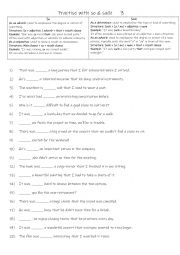
|
A2+-B1 Practise with so & such 3
First, students need to familiarise themselves with the 2 words. Then they read the sentences to work out which one is needed to complete the gap-fill. Each word is used 10 times! Answers on page 2
Level: elementary
Age: 9-100
Type:
Downloads: 110
|
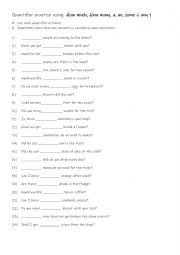
|
Quantifier practise using How much, How many, a, an, some & any 1
Students first familiarise themselves with the 6 quantifiers and their use. Then they complete the gap-fill with the correct word. Answers on page 2.
Level: elementary
Age: 7-100
Type:
Downloads: 103
|
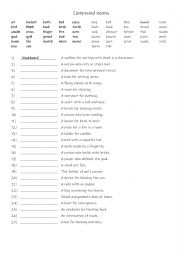
|
A2-B1 27 compound nouns
Students familiarise themselves with the words in bold and the words in normal font. Then they read the description sentences to workout which compound noun creates the word being described. Answers on page 2.
Level: elementary
Age: 8-100
Type: worksheet
Downloads: 112
|
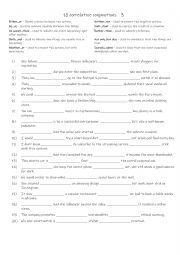
|
10 correlative conjunctions 3
First, students need to familiarise themselves with the 10 conjunctions and their meanings. Then they read the sentences to see which one is required to complete the gap-fill. Each linker is used 2 times! Answers on page 2.
Level: intermediate
Age: 9-100
Type:
Downloads: 120
|
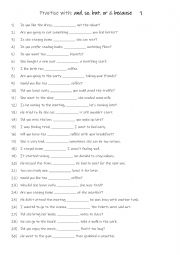
|
A1+- A2 Practise with and, so, but, or & because 1
Students should learn conjunctions like and, so, but, or, and because as they are fundamental for creating cohesive and meaningful sentences. These words help connect ideas logically, express relationships like addition, contrast, cause-and-effect, and choice, and improve the overall flow of speech and writing. By mastering these conjunctions, stud...
Level: elementary
Age: 9-100
Type:
Downloads: 122
|
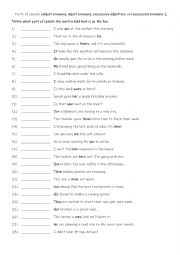
|
Parts of speech subject pronouns, object pronouns, possessive adjectives and possessive pronouns 2
Learning subject pronouns, object pronouns, possessive adjectives, and possessive pronouns is essential for clear and accurate communication in English. They help students construct sentences correctly, avoid repetition, express ownership, and make their speech and writing more natural and fluent. Mastering these elements also enhances comprehensio...
Level: elementary
Age: 8-100
Type:
Downloads: 110
|
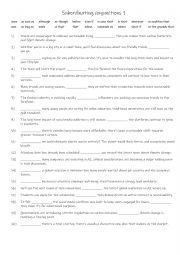
|
B2-C1 20 subordinating conjunctions 1
Students should learn subordinating conjunctions like since, as soon as, although, before, and others because they help create more complex and meaningful sentences by connecting dependent and independent clauses. These conjunctions allow students to express relationships between ideas, such as time, condition, contrast, and purpose. For example, t...
Level: advanced
Age: 11-100
Type:
Downloads: 113
|
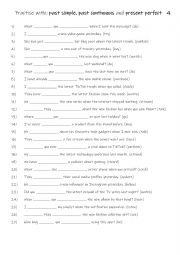
|
A1+-A2 Practise with past simple, past continuous and present perfect 4
First, students need to familiarise themselves with the 3 tenses and their use. Then they read the sentences to work out which one is needed to complete the gap-fill using the given verb in (). Each tense is used 9 times! Answers on page 2
Level: elementary
Age: 8-100
Type:
Downloads: 107
|
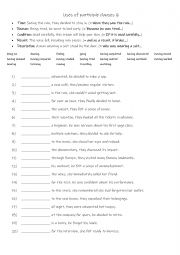
|
Uses of participle clauses 6
Students should learn the five uses of participle clauses because they help create more concise, fluid, and sophisticated sentences. These clauses allow for the expression of time, reason, condition, result, and description in a shorter, more efficient way, making writing and speaking more dynamic and less repetitive. For example, participle clause...
Level: elementary
Age: 10-100
Type:
Downloads: 117
|
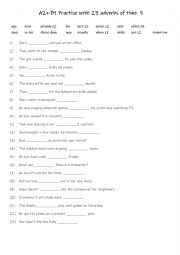
|
A2+-B1 Practise with 17 adverbs of time 5
Recognising these expressions improves listening and reading comprehension, enabling students to grasp stories, instructions, and conversations more effectively. First, students need to familiarise themselves with the 17 time expressions and their use. Then they read the sentences to work out which one is needed to complete the gap-fill. Answers on...
Level: elementary
Age: 9-100
Type:
Downloads: 113
|
|
|
|
|












